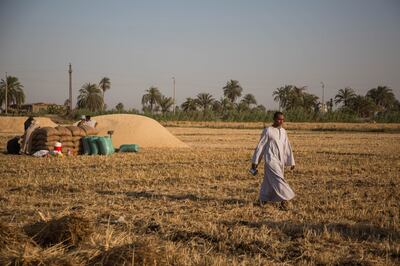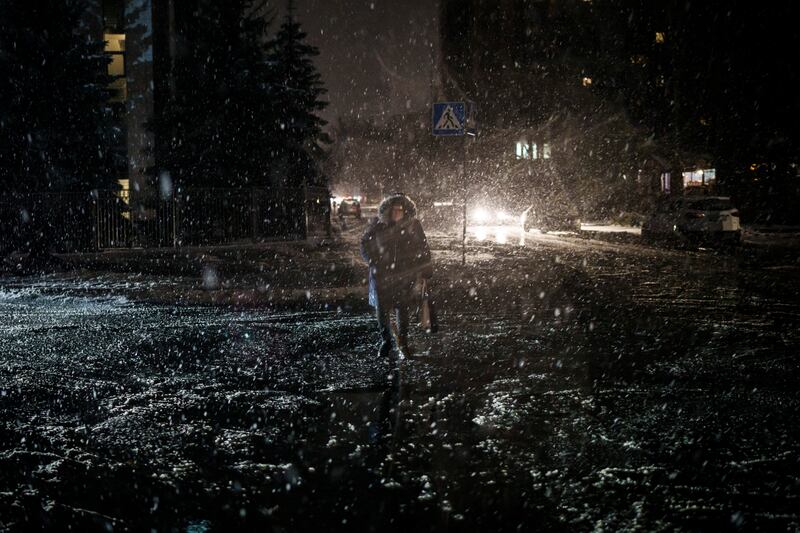In most major European wars of recent centuries, historians have noted that General Winter has been a decisive factor for Russia on the battlefield.
The associated analysis is that Russia often begins its campaigns badly but while it starts out losing, it finds the momentum from a hard rearguard of the winter months to prevail with heroic determination in the end.
So far through the close of 2022 and 2023, the temperatures across Europe have been breaking records for seasonal highs. Having the seen the tantalising prospect of a bitter winter for just a week in mid-December, when temperatures indeed plunged to sub-zero, the return of mild conditions has taken the pressure off the Europeans.
Even in Ukraine there is sense that the weather is not playing its expected role in shaping the battles. There has been little of the hard frost conditions that change the dynamics of trench warfare.
Last week, the price of the all-important gas deliveries that Europe needs to keep its power-generation plants and home-heating systems fuelled hit an important new milestone.
The benchmark closed the year out at roughly the same level as it began. The war was launched on February 24 and at times the price level had spiked to intolerable levels. But through it all, the European finances have been able to absorb the shock. The deindustrialisation of Europe that once might have aided the Russian ambitions is a far-off objective now.
Fears that there may not be enough gas to see Europe through the winter peak have largely dissipated. The EU’s storage capacity is 83 per cent full and last month, the region’s gas grid was able to import a record 12 million tonnes of LNG.
Fortuitously, the weather saw demand slump as well. And that saw prices fall below €65 ($69) per megawatt hour, down from almost €350 during the scramble to fill up those storage facilities in August.
There remains the possibility of a tough summer and autumn for the Europeans as Russia withholds gas supplies and China starts to recover, piling in new demand for LNG. If the Europeans are squeezed out of global markets, then Moscow might feel it’s worth holding on for another call-up of its General Winter strategy in a year’s time.
There are forecasts by experts that the EU remains about 27 billion cubic metres short of the projected shipments of gas it needs in 2023. This is based on a Chinese bounce-back to levels of demand seen before the pandemic-induced slowdown.
From another market comes more signs that Russia has not correctly judged the impact of its Ukraine campaign on furthering its goals.
In 2022, world food prices were as a whole on average almost 15 per cent higher than the previous year. The spike in prices was particularly acute in the first half, before UN-brokered agreements kicked in to get Ukraine’s grain shipments moving across the Black Sea again.
The UN’s index of food-commodity costs ended a record-setting year also back where it started. The measure fell 1.9 per cent in December to post its first year-on-year decline since 2010.
Russia was a participant in the UN Black Sea deal and the important dynamics of the developing world played a restraining part in establishing that arrangement in the first place. Russia is itself exporting large wheat volumes, keeping prices in check in the second half of 2022.

But the war is not over and the conflict could yet return to cast a shadow over world commodity supplies. Wartime shortages are hampering the finances of Ukrainian farmers and forcing them to leave some land unsown. For this reason, one of the big issues for Kyiv is its failure to develop a narrative that appeals to nations beyond its list of solid backers.
Looking down some charts of military and financial assistance to Ukraine last week, I was struck that while the EU and the US have weighed in with tens of billions of dollars, the numbers of substantial donations run out pretty quickly. The Kiel Institute for the World Economy tracker has only 27 nations that have made donations higher than hundreds of millions.
The ability to develop an Africa plan, for example, has so far eluded the Ukraine government. When Ukrainian President Volodymyr Zelenskyy did one of his video calls with the African Union last year, just four heads of state were in the assembly to listen.
Resisting the impression among developing nations that the Ukraine conflict can be dismissed as a “western war” remains vital for Kyiv. The showdown over the grain exports provided a glimmer of hope but otherwise Ukraine has failed to win the perceptions battle outside its core group of allies.
The unexpected developments that this winter has brought are one facet of the conflict. With the introduction of western armour in the weeks ahead, the narrative around the battlefield will change again.
Inevitably both sides will look ahead to new endgames, not least because the fallout from the conflict is still having an impact well beyond European shores.





